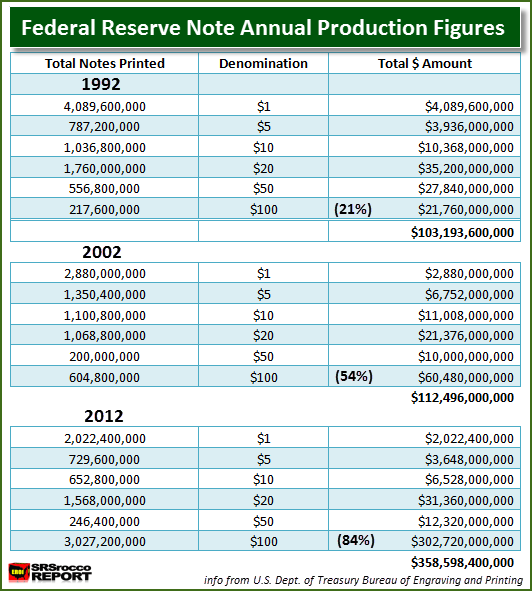U.S. TREASURY: Ramps Up the Zimbabwe Style Printing Press
In just a few years, the U.S. Department of Treasury Bureau of Engraving & Printing has substantially increased the printing of its largest valued Federal Reserve Note — the $100 bill. Ironically, the U.S. Department of the Treasury calls its Bureau of Engraving & Printing’s website, the MoneyFactory.gov. Who says government officials don’t have a sense of humor?
Why on earth should gold and silver miners spend $100′s of billions of dollars exploring, mining, extracting and refining to produce real money, when you can go to the U.S Money Factory and get all the money you need? And for pennies on the dollar.
According to the U.S. Treasury’s website:
During Fiscal Year (FY) 2013, the Bureau of Engraving and Printing delivered approximately 26 million notes a day with a face value of approximately $1.3 billion.
During Fiscal Year (FY) 2013, the Bureau of Engraving and Printing delivered approximately 6.6 billion notes at an average cost of 10 cents per note.
Over 90 percent of the notes that the BEP delivers each year are used to replace notes already in, or taken out of circulation.
The Bureau of Engraving & Printing releases annual data on the Federal Reserve Note production figures and the table below shows the changes from 1992-2012:
Now, if we concentrate on the most used Federal Reserve Notes, the $1, $10, $20 and $100, we can clearly see the change in annual production figures below:

